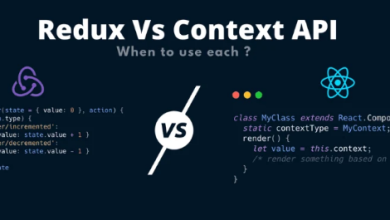Java Security Best Practices
In the ever-evolving landscape of technology, securing your Java applications is paramount. The rise of increasingly sophisticated cyber threats necessitates robust security measures in all aspects of software development, particularly for applications developed using popular languages like Java. In this blog post, we will explore some crucial best practices for Java security, aimed at fortifying your applications and protecting them from potential vulnerabilities.
- Code Review: Regular, detailed code reviews should be part of the development process. It’s an effective way to spot potential security vulnerabilities early in the development cycle, reducing the risk of a compromise.
- Use of Security Libraries: Java provides various security libraries such as OWASP Java Encoder for HTML encoding and Java Cryptography Extension (JCE) for data encryption. Utilizing these can help in strengthening the security of your Java applications.
- Input Validation: Validate and sanitize all inputs to prevent attacks such as SQL injection, Cross-Site Scripting (XSS), and Remote Code Execution (RCE).
- Use of Latest Java Versions: Always use the most recent stable release of Java. Each new version not only brings new features and performance improvements but also includes patches for security vulnerabilities found in previous versions.
- Least Privilege Principle: This principle suggests that a user should be given the minimum levels of access necessary to accomplish their tasks. This principle reduces the potential damage caused in case an attacker compromises a user account.
Deploying secure Java software development Java software development practices is crucial to preventing potential breaches. This involves regular updating of Java frameworks and libraries, strong version control, and rigorous testing methodologies. With Java’s versatility and wide usage, adhering to best practices in Java software development is a fundamental step towards achieving a robust application security posture.
- Implement Security Headers and Cookies: Java developers can utilize HTTP response headers and cookies to prevent attacks like Cross-Site Scripting (XSS) or Clickjacking. This includes setting security-related HTTP headers like Content-Security-Policy (CSP), X-Content-Type-Options, and Strict-Transport-Security (STS). Also, cookies should be set with attributes like ‘Secure’, ‘HttpOnly’, and ‘SameSite’.
- Error Handling and Logging: Proper error handling and logging are essential to avoiding information leakage that could provide an attacker with clues to exploit the system. Make sure to log errors, monitor log files and have a proper alert system in place.
- Security Testing: Regular security testing, including penetration testing, is a key aspect of secure Java development. These tests help identify vulnerabilities and ensure the implemented security measures are working effectively. Tools such as OWASP ZAP can assist in performing these tests.
- Continuous Education: Technology and potential security threats evolve rapidly. Thus, continuous education on the latest security threats and countermeasures is crucial for developers. This could involve regular training sessions, attending security conferences, or following reputable online security resources.
Firstly, always leverage the principle of least privilege. This means any component of your application should only have access to the information and resources it needs to perform its function. Over-privileged components can present opportunities for malicious exploits.
Secondly, sanitize and validate all inputs. Never trust user input blindly. Use strong type checking, and where possible, use prepared statements or stored procedures in your database interactions to prevent SQL Injection attacks.
Thirdly, keep your Java environment up-to-date. Regularly updating your Java Development Kit (JDK) ensures you have the latest security patches and improvements.
Finally, incorporate security in your DevOps pipeline. Implementing security checks as part of your CI/CD pipeline can help catch potential security threats early in the development cycle. Tools like SonarQube and OWASP Dependency-Check can be integrated into your pipeline to perform automatic security analysis. In addition to these general principles, here are some more detailed points to bear in mind:
- Secure your code: Code security is paramount. Tools like FindBugs, PMD, and Checkstyle can help you identify and fix these issues.
- Secure your dependencies: Be aware of the security issues in your third-party dependencies. Tools like OWASP Dependency-Check can help identify known vulnerabilities in your project’s dependencies.
- Encrypt sensitive data: Always encrypt sensitive data, both at rest and in transit. Use strong encryption algorithms and manage your encryption keys securely.
- Use secure cookies: If your application uses cookies, ensure they are secure. Use the ‘Secure’ and ‘HttpOnly’ flags to protect your cookies from cross-site scripting (XSS) attacks and interception over unencrypted connections.
- Use Content Security Policy: Implement a strong Content Security Policy (CSP) to protect your users from XSS attacks. This policy controls which domains the browser should consider as valid sources of executable scripts.
- Monitor and audit: Regularly monitor and audit your application logs. Look for any suspicious activities, and investigate any potential security incidents. Tools like ELK Stack can help collect, index, and analyze your logs.
In conclusion, securing your Java applications requires a proactive and vigilant approach. By following these best practices and staying updated with the latest security trends, you can significantly fortify your applications and mitigate potential security risks. However, remember that security is not a one-time activity, but an ongoing process that should be integrated into every stage of your software development lifecycle.




